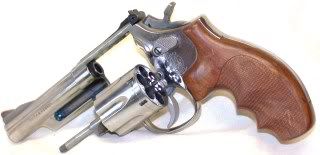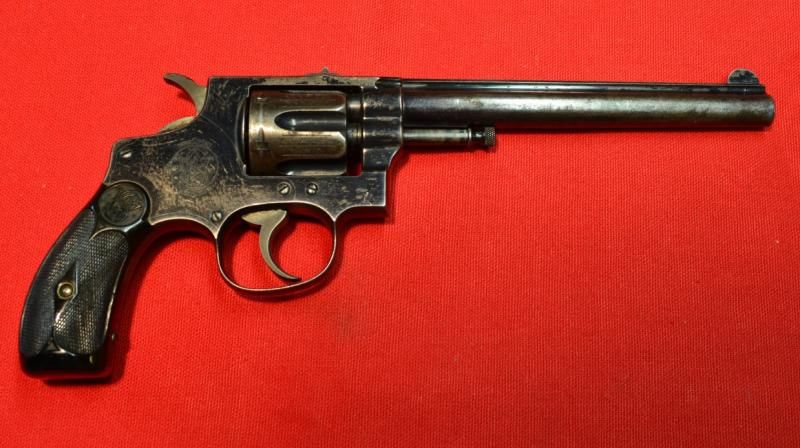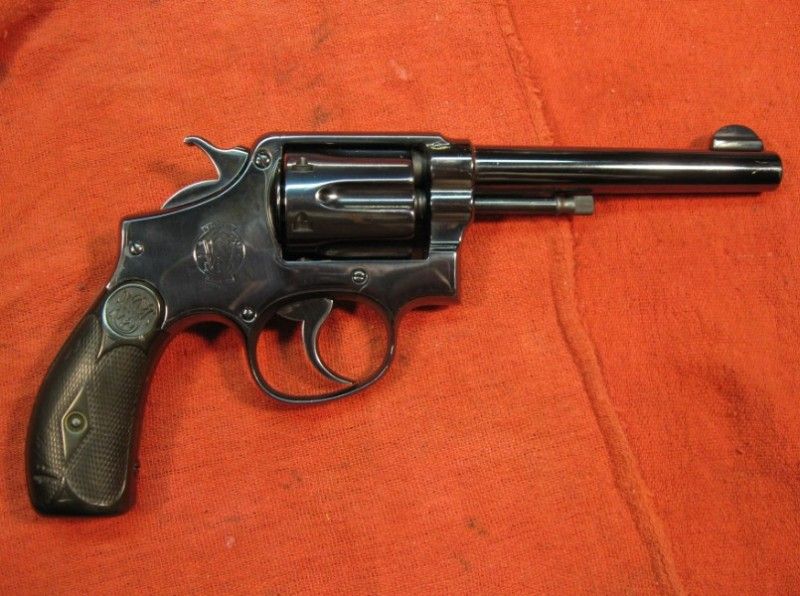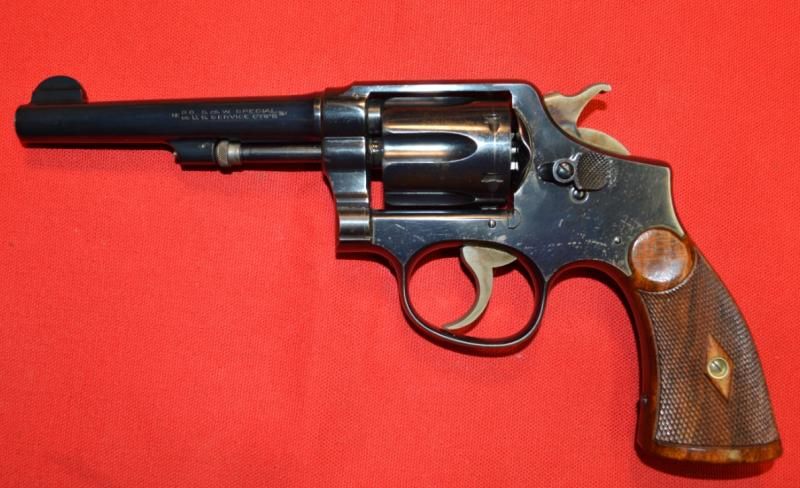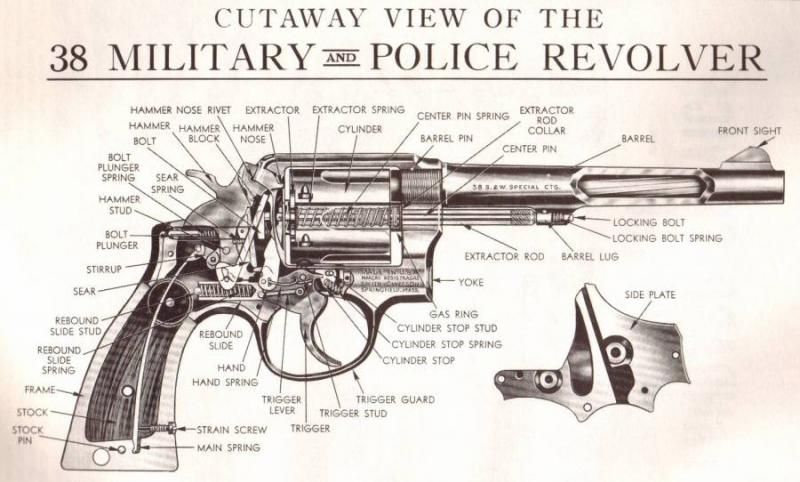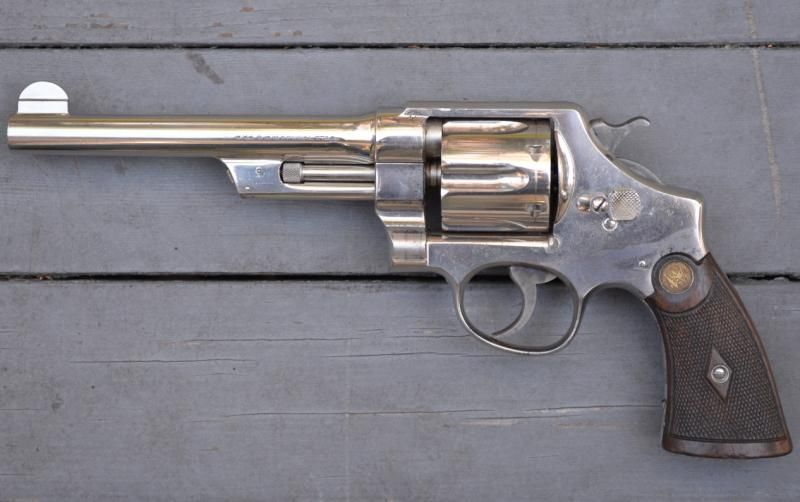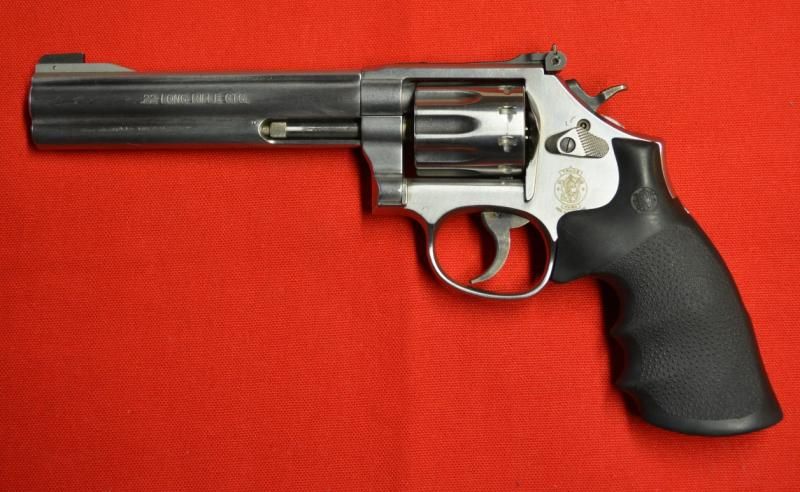Howdy
There were only three Smith and Wesson side swing revolvers made with no protection for the extractor rod at all; nothing for the front of the rod to latch to.
The 32 Hand Ejector 1st Model (Model of 1896, this one shipped in December of 1896)
And the 38 M&P Models of 1899 and 1902. This Model 1899 shipped in 1902. Yes, it has been refinished.
By 1905, S&W made major changes to the lockwork of the M&P, and the first underlug appeared to latch the front end of the extractor rod. This 38 M&P Model of 1905, First Change left the factory in July of 1906.
Judging from the hammer and front sight shape on this diagram, this cutaway view dates from just before the M&P changed its name to Model 10. The lug under the barrel is called out as the Barrel Lug in this illustration.
As I stated earlier, the shroud first appeared with the Triple Lock in 1908. Nomenclature seems to vary. The Standard Catalog of Smith and Wesson goes back and forth calling it the Ejector Shroud and the Extractor Shroud on various pages.
Nickel plated Triple Lock from that shipped in October of 1915.
But for some reason, rather than calling this a Full Length Shroud, the SCSW calls this a Full Lug.
Model 617-6 that shipped in July of 2003. The only MIM parts/Lock/Full Lug Smith that I own.


